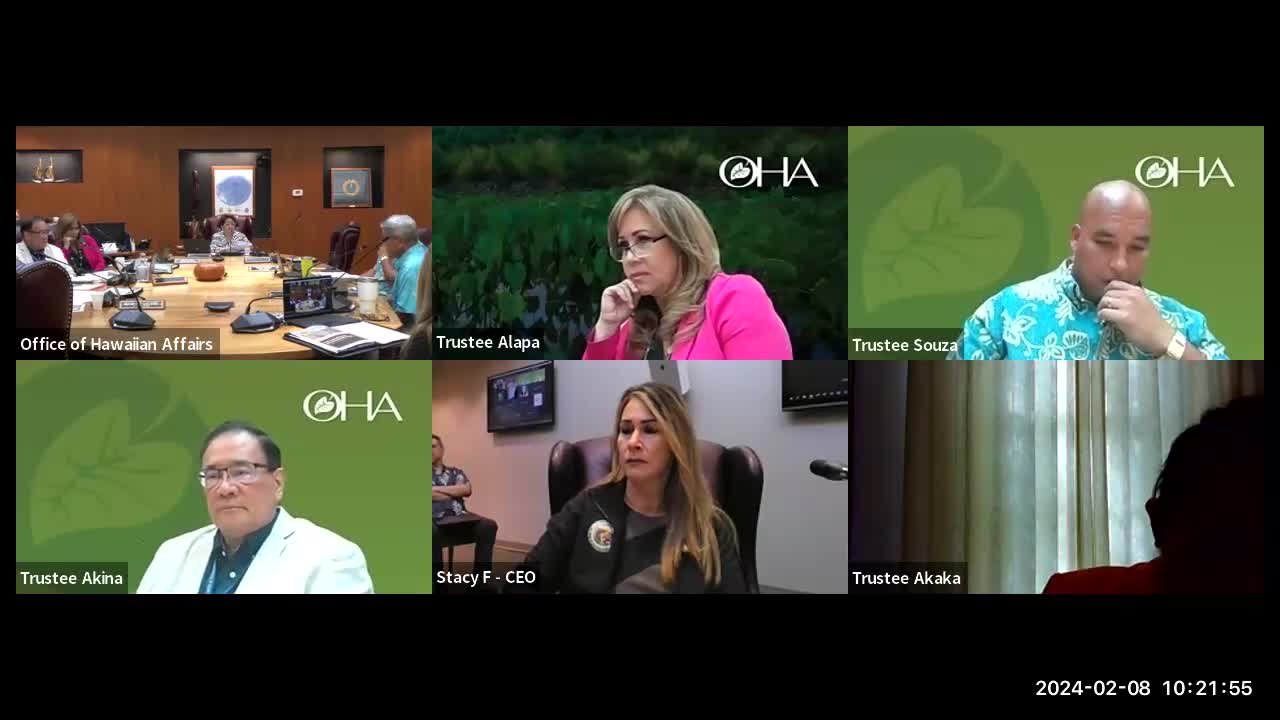Community rallies to protect sacred Kauai lands from development
June 01, 2024 | Task Force Created by Act 170, Executive , Hawaii

This article was created by AI summarizing key points discussed. AI makes mistakes, so for full details and context, please refer to the video of the full meeting. Please report any errors so we can fix them. Report an error »

During a recent government meeting, discussions centered on the preservation of Kaneoluma, an ancient Hawaiian village located on the south side of Kauai Island. The village, which is federally recognized, has become a focal point for cultural heritage and environmental concerns.
A key speaker, Rupert Rowe, emphasized the importance of safeguarding sacred lands from potential desecration. He highlighted a recent planning committee hearing that addressed the need for a drainage permit, crucial for managing water flow in the area, which lacks natural rivers. Rowe noted that the land use commission had previously denied a zoning change due to the absence of a proper drainage plan, raising concerns about the integrity of the land.
Rowe also reflected on the historical significance of Kaneoluma, mentioning efforts to restore the site after damage from Hurricane Iniki in 1992. He underscored the collaborative work of various trustees and community members in revitalizing the area, which included returning remains to their rightful place and cleaning up the site.
The meeting also touched on the broader cultural implications of preserving Kaneoluma, with Rowe asserting that the efforts to protect the site are not just about land management but also about honoring the past to ensure a sustainable future for the community. He called for continued support from local authorities to maintain the integrity of this culturally significant site.
As the conversation progressed, Rowe expressed pride in the recognition Kaneoluma has received from various airlines and international entities, indicating a growing awareness and appreciation for the site beyond Hawaii. The discussions underscored the ongoing challenges and commitments involved in preserving Hawaii's rich cultural heritage amidst modern development pressures.
A key speaker, Rupert Rowe, emphasized the importance of safeguarding sacred lands from potential desecration. He highlighted a recent planning committee hearing that addressed the need for a drainage permit, crucial for managing water flow in the area, which lacks natural rivers. Rowe noted that the land use commission had previously denied a zoning change due to the absence of a proper drainage plan, raising concerns about the integrity of the land.
Rowe also reflected on the historical significance of Kaneoluma, mentioning efforts to restore the site after damage from Hurricane Iniki in 1992. He underscored the collaborative work of various trustees and community members in revitalizing the area, which included returning remains to their rightful place and cleaning up the site.
The meeting also touched on the broader cultural implications of preserving Kaneoluma, with Rowe asserting that the efforts to protect the site are not just about land management but also about honoring the past to ensure a sustainable future for the community. He called for continued support from local authorities to maintain the integrity of this culturally significant site.
As the conversation progressed, Rowe expressed pride in the recognition Kaneoluma has received from various airlines and international entities, indicating a growing awareness and appreciation for the site beyond Hawaii. The discussions underscored the ongoing challenges and commitments involved in preserving Hawaii's rich cultural heritage amidst modern development pressures.
View full meeting
This article is based on a recent meeting—watch the full video and explore the complete transcript for deeper insights into the discussion.
View full meeting
